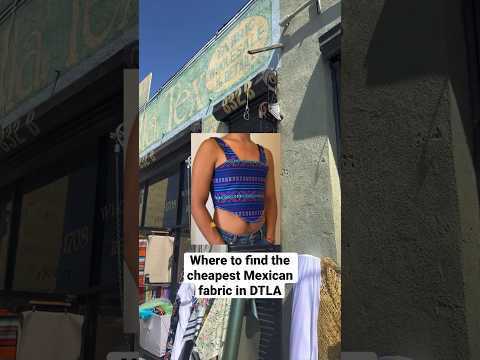Fabric Mexican is a captivating and vibrant textile that embodies the rich cultural heritage of Mexico. This exquisite fabric showcases intricate patterns and bold colors, reflecting the country's diverse traditions and artistic flair. The authenticity of Mexican fabric is truly mesmerizing, as it is meticulously handcrafted by skilled artisans using age-old techniques passed down through generations. Each thread tells a story, weaving together history, heritage, and craftsmanship. With its eye-catching designs and high-quality materials, Fabric Mexican is not just a piece of cloth; it is a work of art that adds a touch of elegance and uniqueness to any setting. Whether used for clothing, home decor, or accessories, this fabric effortlessly captures attention and sparks curiosity. Its distinctiveness is undeniable, making it a perfect choice for those seeking to add a touch of cultural authenticity to their lives. Dive into the world of Fabric Mexican and embrace the beauty of Mexico's rich artistic tapestry.

The Beauty and Richness of Fabric Mexican
Fabric Mexican, also known as Mexican textiles, are renowned for their vibrant colors, intricate designs, and cultural significance. These textiles have a long history in Mexico and continue to be an important part of the country's cultural heritage. In this article, we will explore the fascinating world of Fabric Mexican, its history, production techniques, and its significance in Mexican culture.
The History of Fabric Mexican
The history of Fabric Mexican dates back thousands of years to the pre-Columbian era. The indigenous peoples of Mexico, such as the Maya and Aztecs, were skilled weavers and had a deep appreciation for textiles. They used natural materials like cotton and agave fibers to create beautiful fabrics for clothing, ceremonial purposes, and trade.
With the arrival of the Spanish conquistadors in the 16th century, traditional weaving techniques were influenced by European styles and materials. The introduction of the treadle loom revolutionized the textile industry in Mexico, allowing weavers to create more intricate designs and patterns.
Over time, Fabric Mexican became a symbol of identity and cultural pride for the Mexican people. Each region in Mexico developed its own unique weaving styles and motifs, reflecting the diverse indigenous cultures and influences from Spanish and other European settlers.
The Production Techniques of Fabric Mexican
The production of Fabric Mexican involves several intricate techniques that have been passed down through generations. One of the most common techniques is backstrap weaving, which involves using a simple loom attached to the weaver's body. This technique allows for greater control over tension and produces intricate designs.
Embroidery is another essential technique used in Fabric Mexican. Skilled artisans create intricate patterns and motifs using brightly colored threads. This technique is often used to embellish clothing, accessories, and household items.
Another technique, known as ikat or jaspe, involves dyeing the threads before they are woven. This creates a unique effect where the designs appear blurred or feathered, adding depth and complexity to the fabric.
Many Fabric Mexican pieces are also decorated with beadwork and appliqué. Beadwork involves meticulously stitching small beads onto the fabric, while appliqué involves attaching cut-out fabric shapes onto a base fabric. Both techniques add texture and visual interest to the textiles.
The Significance of Fabric Mexican in Mexican Culture
Fabric Mexican holds immense cultural significance in Mexico. It is not just a form of artistic expression but also serves as a connection to the country's rich history and traditions.
These textiles are often used to create traditional garments, such as the iconic huipil worn by indigenous women. The huipil is a loose-fitting blouse with elaborate embroidery or woven designs, showcasing the skill and creativity of the artisans.
Fabric Mexican is also used in religious ceremonies and celebrations. During festivals and holidays, people adorn their homes and altars with colorful textiles, creating a vibrant and festive atmosphere. These textiles are believed to bring good luck and protect against evil spirits.
Fabric Mexican has also gained recognition on a global scale. Its unique beauty and cultural significance have captured the attention of designers, collectors, and tourists alike. Many international fashion brands have incorporated Mexican textiles into their collections, showcasing the talent and craftsmanship of Mexican artisans to the world.
Preserving the Legacy of Fabric Mexican
Despite its rich history and cultural importance, Fabric Mexican faces challenges in the modern world. Mass production and cheap imitations have led to a decline in demand for authentic Mexican textiles. Additionally, younger generations are often less interested in traditional crafts, preferring modern and Westernized styles.
However, efforts are being made to preserve and promote Fabric Mexican. Artisan cooperatives and organizations are working to provide support and training to craftsmen and women, ensuring that these skills are passed on to future generations. The Mexican government has also recognized the importance of textiles and has implemented programs to protect and promote the textile industry.
By supporting authentic Fabric Mexican and learning about its cultural significance, we can contribute to the preservation of this beautiful art form and ensure that it continues to thrive for generations to come.
In conclusion, Fabric Mexican is a true testament to the rich cultural heritage of Mexico. Its vibrant colors, intricate designs, and historical significance make it a cherished art form. By understanding its history, production techniques, and cultural significance, we can truly appreciate the beauty and craftsmanship of Fabric Mexican.
Discover the Ultimate Haven for Mexican Fabric in Downtown LA
Fabric Mexican
Fabric Mexican
Mexican fabric is a vibrant and culturally significant textile that has a rich history and is renowned for its intricate designs and bold colors. This traditional fabric is deeply rooted in Mexican culture and reflects the country's diverse heritage and indigenous craftsmanship.
| Design | Meaning | Region |
|---|---|---|
| Zigzag | The zigzag pattern represents lightning and symbolizes energy and power. It is commonly found in fabrics from the central regions of Mexico. | Central Mexico |
| Floral | Floral designs are prevalent in many Mexican fabrics, signifying the country's deep connection with nature and its vibrant flora. Each flower holds its own symbolic meaning, such as marigolds representing the Day of the Dead. | Oaxaca |
| Stripes | Stripes in Mexican fabric represent balance and harmony. They are often incorporated into traditional clothing like sarapes and serapes, which originate from the northern states of Mexico. | Northern Mexico |
| Diamonds | Diamond patterns are frequently seen in Mexican textiles and signify the importance of maize (corn) in Mexican culture. They also represent fertility and abundance. | Chiapas |
The production of Mexican fabric involves a meticulous process that has been passed down through generations. Skilled artisans use traditional weaving techniques to create these textiles, ensuring each piece is unique and of exceptional quality.
Mexican fabric not only serves as a form of artistic expression but also plays a significant role in preserving the country's cultural heritage. It is utilized in various ways, from traditional clothing such as dresses, ponchos, and blouses, to home decor items like tablecloths, pillow covers, and wall hangings.
When you incorporate Mexican fabric into your lifestyle, you not only elevate your surroundings with vibrant colors and intricate designs but also support local artisans and contribute to the preservation of this invaluable tradition.

